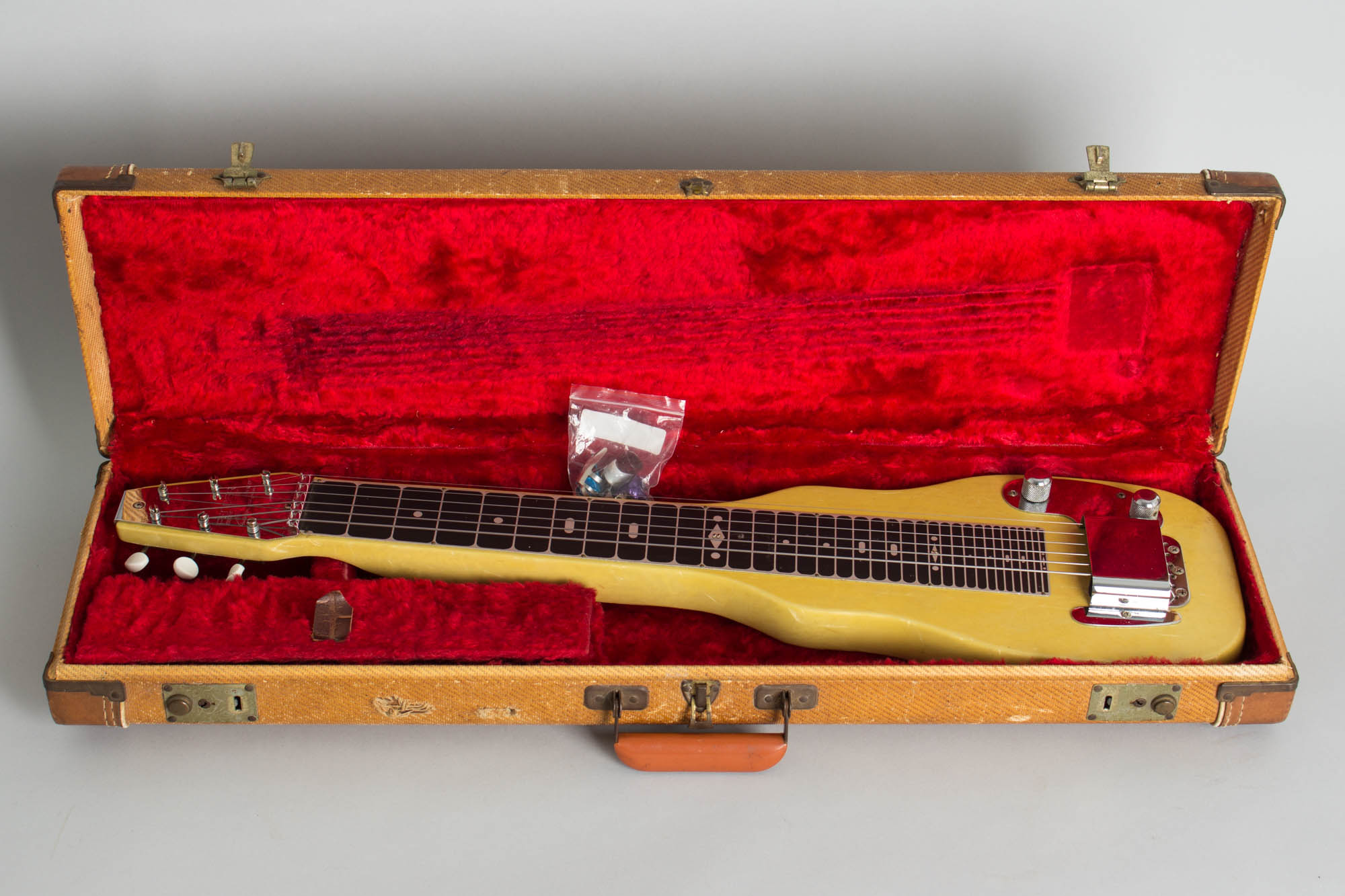

Through 1957, Champs only had a six-inch speaker, but the 1958 model 5F1 featured an 8".

The 5C1 circuit was extraordinarily simple, using one 6SJ7 pentode in the preamplifier section to provide a single stage of voltage amplification, one 6V6 beam power tetrode in the power amplifier section, a 5Y3 rectifier tube and a single volume knob with no tone controls.īy 1955 Fender started putting its amps in the "Narrow Panel" tweed cabinet with a plastic oxblood color grill cloth, and by this time the Champ was officially named the Champ (model 5E1).

Fender also renamed the circuit the "5C1", "5" standing for the decade (1950s), "C" for the third circuit revision, and "1" was the Champ's circuit designation. This style lasted until 1953, when Fender's cabinet style changed to the "Wide Panel" design with a tweed cloth covering. Front" style cabinet the 800 was covered in greenish fabric while the 600 featured two-tone blonde and brown vinyl covering. It was rated at about 3 watts, featuring a "T.V. The belt-drive engine was smaller, quieter and cheaper to build than the bevel-drive motor of earlier Dukes, and is virtually still with us today with the Ducati Monster.First introduced in 1948, it sported the name "Champion 800" (with 8" speaker), changing a year later to "Champion 600" (6" speaker) with circuit designation 5B1. Inspected and re-registered May 2018 after a long lay up.It was a great bike big strong motor, tough as boots and surprisingly comfortable on the open road.The XV morphed into a cruiser in the 1990s as Japan took square aim at Milwaukee by building Harley-styled bikes with Japanese build quality. After Xmas it can be club-registered as it will be 25 years old. Jeff Smith made one last charge for British dirt bikes aboard the BSA 441, winning ’64 and ’65 world titles, as Steve says.The BSA company built another bike for 1966, an exotic 500cc works bike dripping with titanium that reportedly cost $US250,000. OK, and maybe get it dirty a couple of times a year. New parts include Amal 930 carburettor, air filter unit, rear shocks and tyres. “As its name accurately implies, the 2006 MV Agusta Brutale 910R is a take-no-prisoners motorcycle built for the small percentage of riders with enough skill and attitude to bring out the best in its fierce performance.This bike is in very good condition with good compression. SELLER SAYS: Beautiful MV in rare and desirable R specification. I’d already read a few reviews, so I knew the 1200 Sport was Guzzi-sporty, not R1/Fireblade-sporty, but with slightly north of 100 Italian horses it was sure to be quick enough to be entertaining.īut the major appeal was that it looked and sounded magnificent. It was in the then new-ish Perth Convention Centre, presumably in 2006 when the bike was first released.

I once owned a 1981 XV1000 (the predecessor to the big Virago) and rode it two-up from Perth to Hobart and back again. SAYS: I double-checked with Denis and he assures me the 2500km is legit - amazing on a 25-year-old bike. Read more about the B441 here and that ambitious 500 project that ended in tragedy here. It was a dismal failure, and the story ends with a dead body. The F4 was the bike that launched the reincarnation of the MV Agusta brand, and was designed by the same guy (Massimo Tamburini) who designed Ducati’s gorgeous 916. Contact George on SAYS: Marvellous old Suzuki from a time when two strokes roamed the earth. Fuel tank stripped to bare metal and professionally painted by Thomson’s Panel Works Bunbury. All instruments remanufactured and calibrated to as new. The motor from a 1975 GT750 was handed over to Motorcycle Engineering Bunbury and The Bike Doctor North Perth to be totally professionally reconditioned, including new bearings, conrods, 1.5mm oversize pistons, seals, gaskets, new water and oil pumps and carefully assembled. I’d pamper this one and plan to keep it for a very long time. A perfect frame from a 1976 GT750 was sandblasted and powder-coated.


 0 kommentar(er)
0 kommentar(er)
